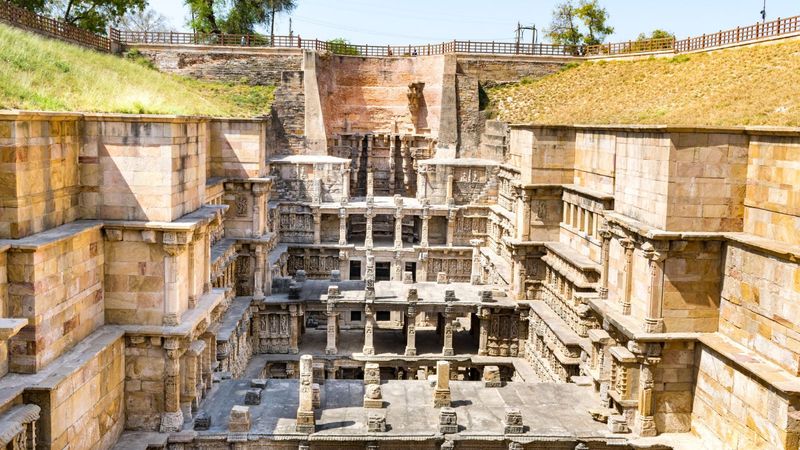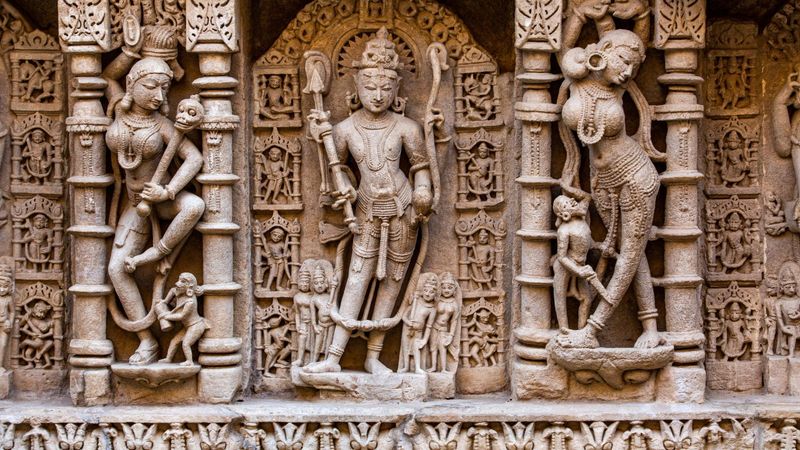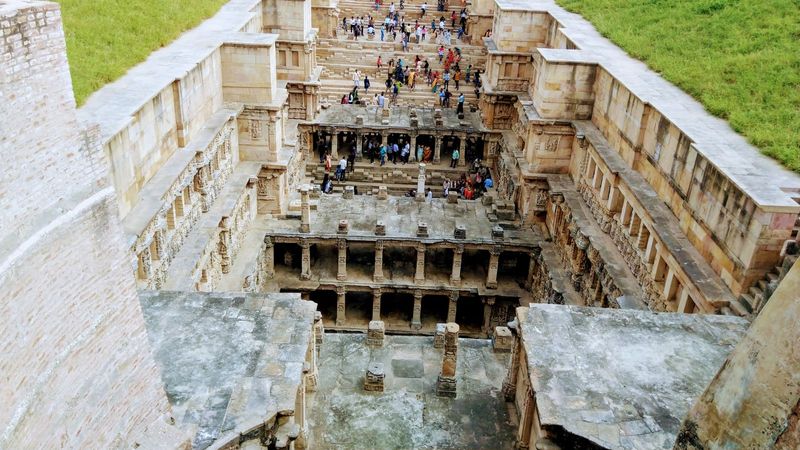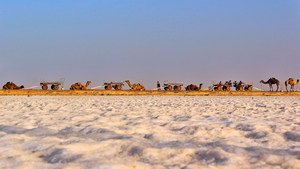Rani ki Vav, an 11th-century stepwell situated at Patan Gujarat, India is well-known for its elaborate design and historical importance in the world of culture. Queen Udayamati had Rani ki vav, Adalaj built in memory of her husband, King Bhima I, from the Solanki dynasty and it boasts a characteristic Maru-Gurjara architectural style. Recognized as a UNESCO World Heritage Site in 2014, Rani ki vav, India is an impressive testament to the artistic as well as engineering skills of that time and provides insight into India's incredibly rich cultural heritage. So, to cover you for your next trip, here are all the details on this architectural marvel including Rani ki vav location, tours and its history.
Rani ki Vav location

Rani Ki Vav, also known as the Queen’s Stepwell, is situated in Patan in Gujarat, India. Close to the banks of the river Saraswati, Rani Ki Vav's location is approximately 125 kilometres from Ahmedabad, making it a very feasible destination for a day trip from the city. Rani Ki Vav's location is also well-connected by road and rail as there are regular trains from major cities such as Ahmedabad and Gandhinagar.
Rani Ki Vav architecture

Rani Ki Vav is an outstanding example of the Maru-Gurjara architectural style, celebrated for its magnificent and unique craftsmanship. Constructed as an inverted temple, Rani Ki Vav, Adalaj extends over 64 meters in length, 20 meters in width and about 27 meters in depth. Rani Ki Vav's architecture is designed with seven levels of stairs containing over 500 principal sculptures and more than a thousand other minor images of gods and goddesses from religious, mythological, as well secular themes
The stepwell is divided into seven terraces with sculptures and carvings of various gods and goddesses like Vishnu, and Brahma. Noteworthy sculptures of Apsaras in Rani Ki Vav architecture, performing various activities, and showcasing the artistic finesse of the period make it worth a visit. The fourth unit of Rani Ki Vav, Adalaj, which is also the deepest level, has a large rectangular tank that is important for water storage and management.
Rani Ki Vav history

Rani Ki Vav was built by Queen Udayamati in memory of her husband King Bhima I of the Solanki Dynasty and dates back from around 1063 to 1068 AD. The monument in addition to being a water reservoir also served as a gathering place for social and religious events. Ultimately, the Saraswati River silted it over and buried it until the 1940s only to be rediscovered later on, and then restored by the Archaeological Survey of India during the 1980s.
Rani Ki Vav, India is also notable for being included in the UNESCO World Heritage list in 2014, due to its historical and cultural significance. The structure is often compared to other prominent architectural works in India, such as the Sun Temple at Modhera and the Vimala Vasahi temple at Mount Abu, due to its artistic splendour and engineering brilliance.
Rani Ki Vav tour information

A visit to Rani Ki Vav, India restores your faith in the opulent depths of India's historical and architectural heritage. The site is open to visitors from 8 AM to 6 PM throughout the year. The best time to visit the Rani Ki Vav is from around September to April, as the region can be more than a little warm, especially in summer.
If you are traveling from Ahmedabad then it's approx 3 hours drive. Rani Ki Vav, Adalaj is well-connected by buses, private taxis, and even shared jeeps for budget travellers. The entry fee is very affordable, set at Rs 40 for Indian visitors and Rs 200 for foreign tourists, but as they are subject to changes, do check once on the ASI website.
What is more to this beautiful monument is that Rani Ki Vav was not only an architectural marvel but a site of historical reinforcement. The carvings are also an indication of the social and cultural life during that time. Visitors can also explore the nearby town of Patan, which offers other historical sites and local crafts, enhancing the overall travel experience.
Additional tips
Rani Ki Vav is a paradise for photography enthusiasts, thanks to its intricate carvings and the play of light and shadow within the well.
Consider hiring a local guide for the Rani Ki Vav tour to gain a deeper understanding of the Rani Ki Vav’s history and the cultural contexts of the carvings and architecture.
Plan a visit to Rani Ki Vav in conjunction with other places like Sun Temple at Modhera or the markets of Patan to witness the weaving process of traditional patola silk weavings.
Disclaimer: The details mentioned throughout this blog are sourced from publicly accessible platforms. At Zeezest, we intend to share factual and verified information. Should there be any inconsistencies or variances in the information provided, please understand that these are entirely unintentional and not meant to mislead.




_1714654230346_thumb_300.jpeg)